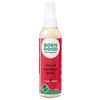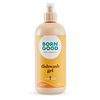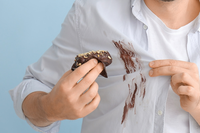Don’t! You’re making a huge mistake—throwing away those vegetable peels, coffee grinds and eggshells. They’re filled with gold! We’re not joking. They may not have enticed Bappi Lahiri, but these scraps are extremely nutritious for your garden soil, if you start composting them. Scroll down to know the why, what and how’s of this green trend.
What is composting?
Recycling your organic kitchen, garden and household waste into natural fertilizer is called composting. Don’t worry it’s easy-peezy! You just have to let nature do its work..after setting up some logistics of course. And, you can compost right at home! More on the methods of composting later.
Why should you compost?
Free fertilizer! Not only does composting cut down your gardening costs, but also gives your soil more TLC than chemical fertilizers ever can. The natural by-product of composting, can be used as mulch to retain water in your flower beds or as fertilizer to give your plants an added boost of nutrients. It also keeps your plants healthy and helps them steer clear of pests and diseases.
If you’re staying in an apartment and don’t maintain a huge garden, composting is still something you should consider. Because, it isn’t just a green trend which helps plants, it also shrinks your carbon footprint. How? By reducing the items you send to the landfill.

What can you compost?
From eggshells to vegetable peels and coffee grinds— you can compost a whole lot of your waste. However, keep in mind to avoid cooked food, dairy and meats. These tend to attract rodents and stink up your compost bin. The above constitute “green” ingredients which provide the carbon for your compost. Apart from the green ingredients, you need “brown” ingredients which can be collected from your garden scraps such as twigs, branches and dead leaves. The browns bring the nitrogen needed for the composting process.

How to get started?
Now that we have clarified the “why”s and “what”s of composting, let’s get going. Here’s what you’re going to need:
1) Get a composting bin or composting bag:
In order to let nature do its job, we need to fashion a special place for it to remain undisturbed by us, animals and the harsher elements of the environment.
That’s where the compost bin comes in. It’s where the magic happens, i.e the organic materials break down to form fertilizer. You can fashion compost bins from empty wine barrels, plastic cans, storage tubs or garbage bags. After you’ve picked your bin, drill 8-10 holes in both the lid and the body to allow for air flow.
2) Pick a spot to place it:
Select a dry spot away from direct sunlight to plonk your compost bin. Make sure you have an accessible source of water nearby. The idea behind picking a spot while composting in your home is to make sure there aren’t drastic changes in temperature and moisture. Why? Because micro-organisms need a good work environment to get their jobs done too!
3) Let the magic begin:
The basic method of composting is to alternately layer your brown and green ingredients. Lay your brown base first. Stack up dried leaves, twigs and branches and then layer some dirt or topsoil over it. You can even add scraps of newspaper, tissues and paper towels to this layer, until almost ½ the bin is full. Then you can start adding your green ingredients, i.e the vegetable peels, fruit scraps, coffee etc. Make sure that the big pieces are chopped into smaller bits to help speed up the composting. Moisten the dry ingredients with water, as and when they’re added to the bin.
How to overcome composting goof-ups?
We’re confident that you’re going to ace this! But, just in case you goof up, here are some quick fixes.
- If your mix is too slimy, this means that your green ingredients have dominated the pile. Add more brown ingredients to balance that out.
- If your mix is too dry or has gone mouldy, spray some water and add some grass clippings to the bin. However, use water judiciously, so that you don’t attract flies. Keep the bin’s lid on to retain more moisture longer.
- If your ingredients are taking way too long to break down, this means that the mix isn’t getting sufficient exposure to air. Take a pitch fork and turn the compost i.e wiggle the mix to aerate the items. But, don’t do this too often. The micro-organisms need time to do their work. You can turn the mix every few weeks.
When is it ready?
You will know your compost is ready to use when the material at the bottom is dark brown in color, with soil-like texture. It should smell like a damp woodland. As a rule of thumb, it takes anywhere between two months to two years for the compost to be ready, depending on the ingredients and their quantity.
However, it’s worth the wait! Not only are you reducing your negative impact on the environment, you’re also making your garden self sufficient. You don’t need to invest in chemical fertilizers to bloom those flowers, when compost from your kitchen waste can do the job better.
Why expose your family to chemicals at all? Give composting a try! You can even make it an activity for your kids, to help them learn about nature away from nature, making them eco-conscious in the process.









